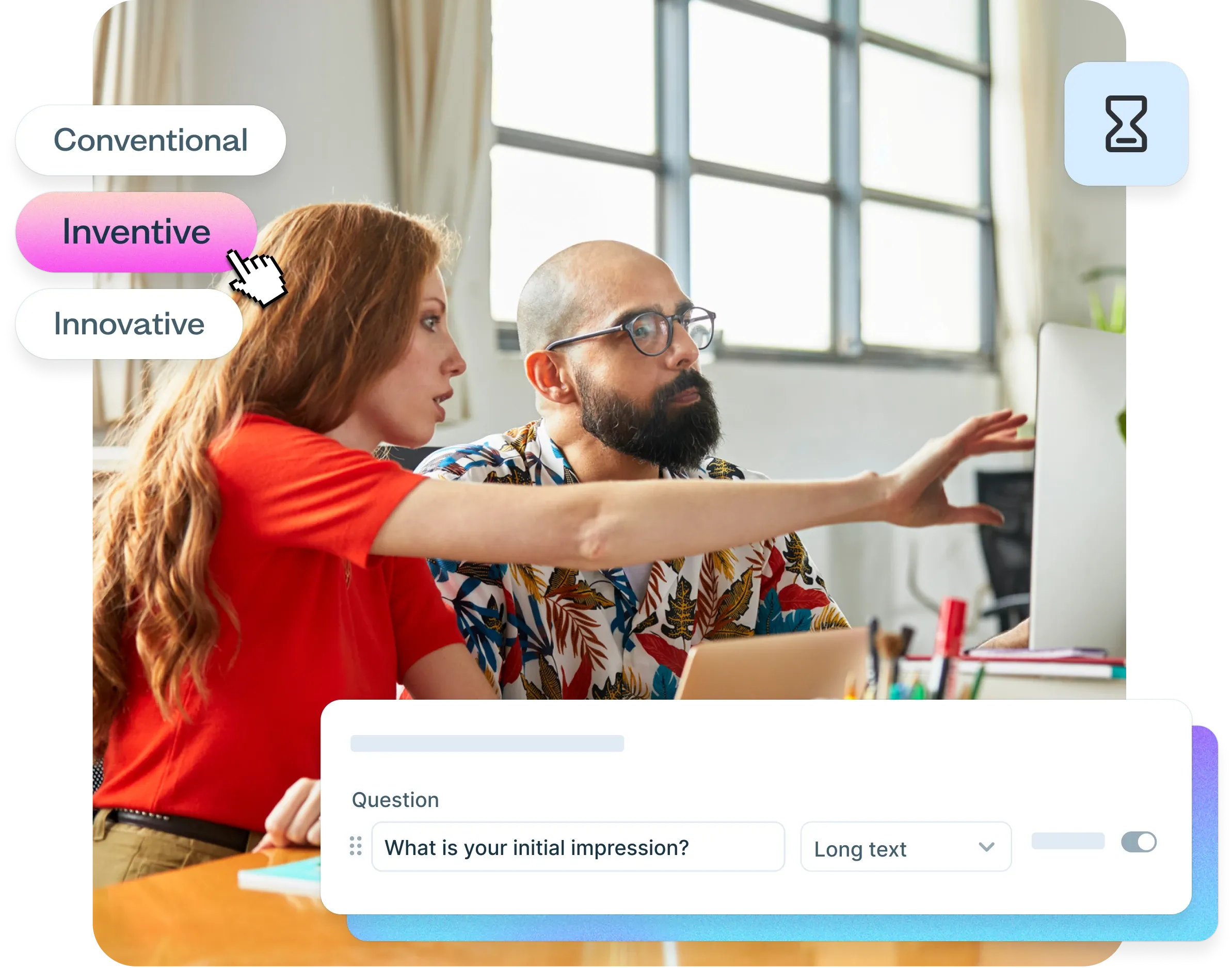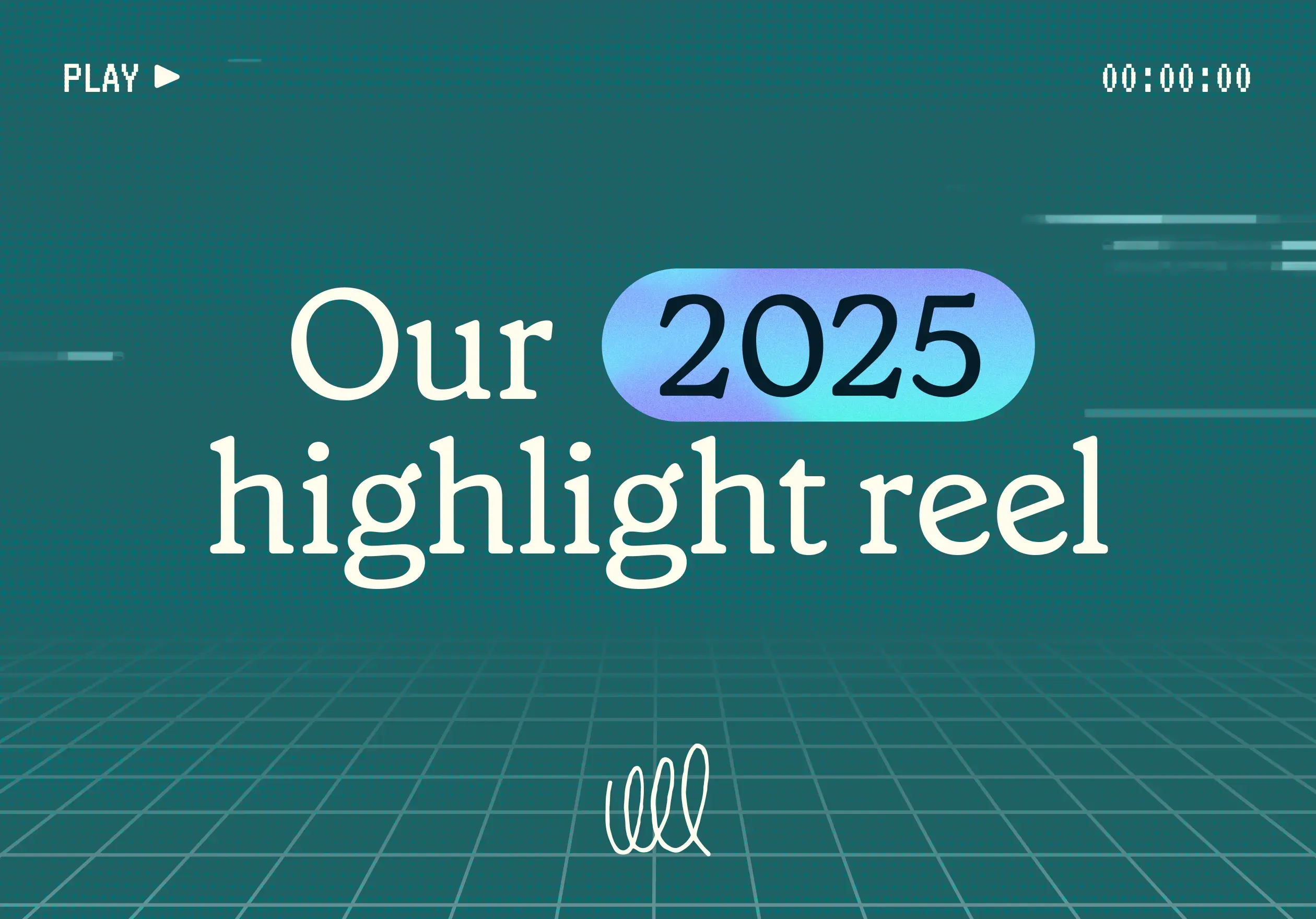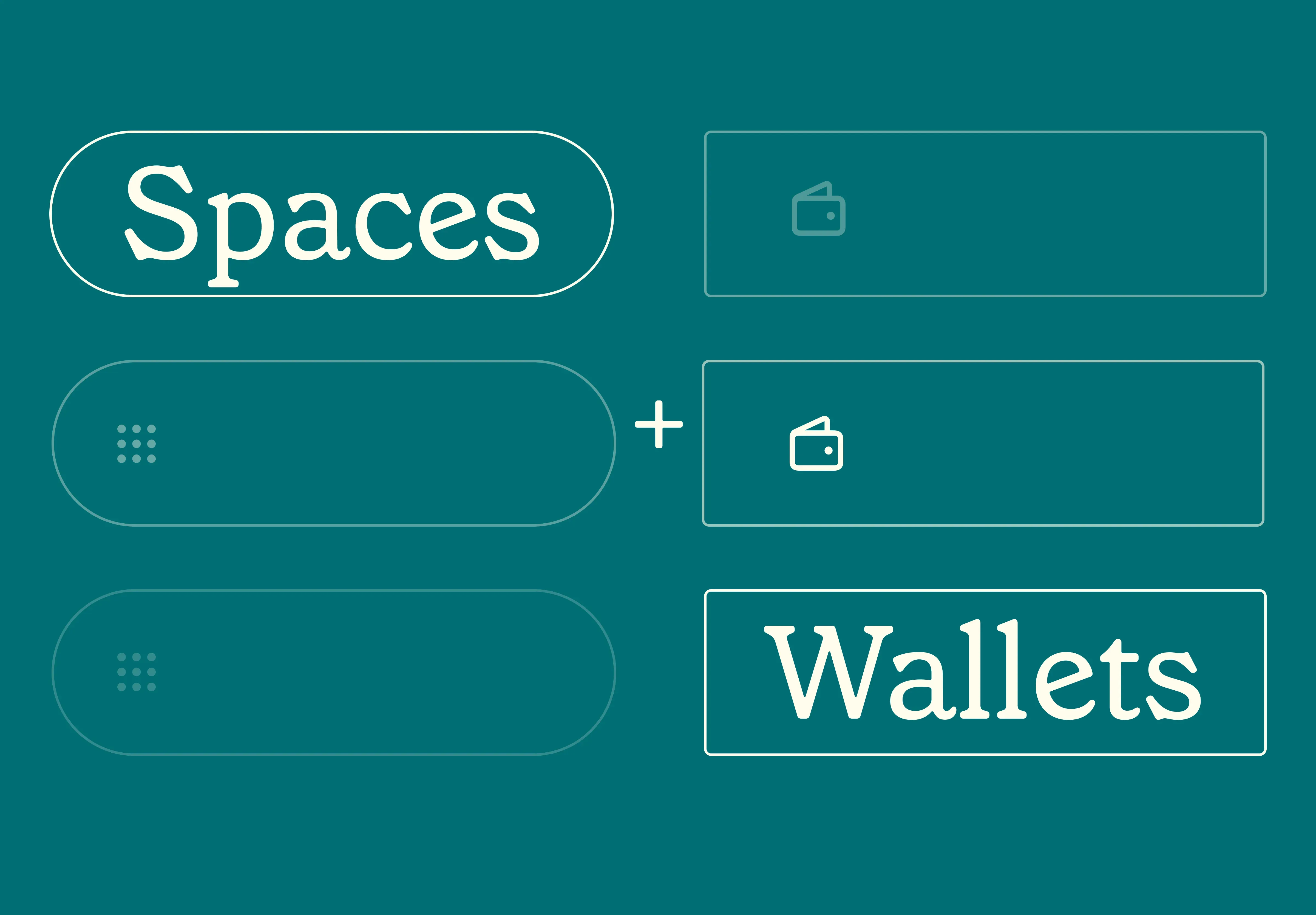01 Aug 2025
|11 min
Lean UX
Discover Lean UX: prioritize learning, build MVPs, and iterate quickly for better usability and success.

Lean UX might sound like just another buzzword in the world of UX design approaches, but it's actually a game-changing methodology that can transform how you create user-centered products.
If you've ever felt overwhelmed by the sheer number of design methodologies out there – Agile UX, HCD, UCD, design thinking – you're not alone. Even experienced UX designers sometimes wonder which approach fits their project best.
Here's the thing: learning different UX approaches gives you more tools and perspectives to tackle design challenges throughout your career. That's why we're starting with Lean UX – a methodology that emphasizes rapid experimentation, continuous learning, and building products that truly serve user needs.
This guide draws from the foundational work of Jeff Gothelf and Josh Seiden in their book Lean UX: Designing Great Products With Agile Teams. Whether you're new to the concept or looking to deepen your understanding, you'll find practical insights to apply in your next project.
Start testing fast
Ready to put Lean UX principles into action? Discover how Lyssna accelerates your build-measure-learn cycles.
What is the Lean UX approach?
Lean UX is an approach that emphasizes continuous learning, team collaboration, and focusing on outcomes over outputs.
According to the masters, Jeff and Josh, Lean UX models itself on Lean Startup principles:
Remove waste in the process.
Harmonize teams to create cross-functional collaboration.
Adopt a model based on experimentation instead of a single point-of-view solution.
From a UX perspective, the “Lean” approach makes sure that, during the product development process, the team “only creates the design artifacts we need to move the team’s learning forward.”
Jeff and Josh developed these principles on the foundations of lean UX and agile development philosophies, and it specifically benefits software development. So, if you’re already aware of these approaches, then great! You’ve got a head start.
Otherwise, the basic summary is that these foundations infuse the Lean UX approach with both the collaboration and systems-forward thinking from design thinking and the short-and-quick delivery cycles from agile development frameworks.
With that in mind, they define Lean UX as:
“Inspired by Lean Startup and Agile Development, it’s the practice of bringing the true nature of a product to light faster, in a collaborative, cross-functional way.
We work to build a shared understanding of the customer, their needs, our proposed solutions, and our definition of success.
We prioritize learning over delivery to build evidence for our decisions.”
How is Lean UX different from traditional UX?
Traditional UX design focuses on deliverables, but with Lean UX, the focus is on learning and feedback.
The difference in these two mindsets means the Lean UX process is much quicker. It goes through lots of mockups and prototype iterations in a short space of time to get user feedback as early as possible, a speed advantage described by the Nielsen Norman Group.
Whereas with traditional UX, since the methodology focuses on the result, a long time can pass in the UX research phase before designs even start. As a result, it’s easy for traditional UX teams to become silos.
This doesn't mean traditional UX design is wrong – different approaches work better in different situations. Understanding your users' needs can help you choose the right approach for your specific context.
What are the benefits of Lean UX?
The focus on learning and feedback makes Lean UX teams use continuous product discovery. This process helps teams discover their product while delivering it. Lean UX offers several benefits:
Since it helps you learn continuously and quickly, you know how well your product is serving your customers at any given point.
You end up raising your customers’ expectations of product quality and response times to their issues and feedback.
It helps build customer opinions into the design process, a vital tenet of a user-centered approach like Lean UX.
It helps your team avoid the “curse of knowledge” with a continuous feedback loop.
It improves your product’s usability and functionality, making it more accessible, desirable, and valuable.
These benefits also have the side effect of making it easier for your product to stand out against competitors in your market – especially in the software industry. Standing out means better products and business outcomes as you develop a loyal customer base.
The goals and principles of Lean UX design
The main goal of Lean UX is learning and feedback through continuous product discovery to benefit users. As such, users/customers are the most important stakeholders in the whole process.
Lean UX supports this overarching goal with a set of principles that act as foundational pillars. In the Lean UX book, Jeff and Josh organize the Lean UX principles into three categories: team organization, process, and culture.
Team organization
The way Lean UX teams are organized is critical for the success of the method. As such, principles around team organization include:
The entire team must be cross-functional.
Teams must be small, dedicated, and colocated.
Teams are self-sufficient and empowered.
Team need to be problem-focused.
These principles, especially when it comes to digital product development, mean Lean UX teams get to have diverse perspectives and weigh in on creative solutions without the need for external dependencies. It also means team members can optimize their processes for maximum efficiency quickly, leading to speedy product delivery.

Culture
Other than the organizational principles, a broader set of cultural principles also guide the team:
Moving from doubt to certainty.
Outcomes, not output.
Removing waste.
Shared understanding.
No rock stars, gurus, or ninjas – meaning everyone contributes equally without ego or hierarchy..
Permission to fail.
Lean UX is a collaborative design-based process, one that fosters a culture of continuous adaptation. By integrating feedback rapidly, teams can keep pace with the evolving needs of software products.
Through this process, teams can conduct user research based on outcomes that meaningfully change consumer behavior without wasting time and effort, as well as doing so as a creative team willing to experiment, fail, and learn from experience.
Process
Finally, Lean UX wouldn’t be as helpful as it is without the principles guiding its processes, which are:
Work in small batches to mitigate risk.
Continuous discovery.
GOOB (which stands for “getting out of the building”), a concept that emphasizes spending time with users and exploring the market to grasp user needs.
Externalizing work.
Making over analysis.
Getting out of the deliverables mindset.
These process-based principles help Lean UX teams do precisely what they’re supposed to do – build, measure, and learn. Working with small batches in small groups means that if an underlying assumption is wrong, you don’t need to start the whole project again from scratch, which also feeds into the remaining principles.
It’s worth mentioning that Lean UX doesn’t penalize or despise user testing – in fact, you’re probably going to end up with more user testing in Lean UX than you would traditionally. Lean UX simply advocates for building solutions in a continuous loop alongside usability testing.
In case you’re wondering, GOOB was coined by entrepreneur and educator Steve Blank.
The Lean UX design process
Now that you know all about the supporting principles, let’s dive into the practical elements of how Lean UX works. The continuous product discovery loop that drives Lean UX is organized into three main stages: outcomes, assumptions, and the hypothesis statement; product design and building a minimum viable product (MVP); and research and learning.
Outcomes, assumptions, hypotheses
The first part of any UX process is defining the assumptions your team is starting with. Remember, assumptions are statements your team might make about a product without having the evidence to confirm them as fact. As you declare your assumptions, you need to determine whether they’re valid as quickly and cheaply as possible. In Lean UX environments, there are four common assumptions:
Business outcomes (success metrics)
Users (often modeled as personas)
User outcomes (e.g. solving pain points)
Features (product changes, additions, or improvements)
Once you’ve declared your assumptions, they provide a place to start where you can create and test hypotheses or test against problem statements. Your hypothesis unites everyone from product managers to UX researchers with a common starting point, then leads your team towards a product design and building a product ASAP.
Designing and building a minimum viable product (MVP)
Build
To borrow another identical acronym, the MVP is the most valuable player (see what we did there) of Lean UX. Starting with your hypothesis statement, you build the most basic version of your proposed solutions to test them against your hypothesis.
MVPs are usually simple but still interactive, and function basically as intended. They’re based on low-fidelity prototypes, which means they don’t create too much of a negative impact if the idea fails.
If the MVP shows valuable results, you can confidently move forward with further development and prototype testing.
Measure
If your results are neither good nor bad, you can iterate around the original idea in your wireframe designs, for example, and try again.
If the results provided zero value, then you know you can abandon the idea and build a new one.
Learn
This is why the principle of “permission to fail” in your team’s culture is so important. No single person’s ideas get priority, since you can test them all and see what the evidence suggests is the best approach to take forward, proving the hypothesis.
Research and learning
While rapid user testing happens during MVP development, moving forward with a promising MVP means conducting more comprehensive research.
Quick methods of further usability testing include:
A/B testing
Feedback surveys
These are just some methods you can use to validate your Lean UX hypothesis. But of course, with Lean UX, this process is a continuous loop – always looking for improvements in your existing product or when developing a new product.
By continuously testing and learning, your team can build shared understanding and work toward the goal of delivering meaningful, user-centered experiences. Each round of feedback helps clarify what matters most to your users, so you can make confident, collaborative design decisions.
Launch your MVP
Turn Lean UX theory into practice. Test assumptions, validate ideas, and iterate faster with Lyssna.
Implement a Lean UX approach with Lyssna
Lean UX teams depend on fast and reliable tools to get them through each “sprint” of product development and to engage the users throughout the process – a core principle of Lean UX methodology. The smoother the workflow, the better.
At Lyssna, you can set up a “source of truth” for all of your user testing and research needs. Lyssna offers a variety of different testing methods and, more importantly, quick results, enabling your team to move at the pace you need to validate your MVPs or move onto different ideas.

Alexander Boswell
Technical writer
Alexander Boswell is a product-led content writer and researcher with a background in marketing strategy and consumer behaviour. When he’s not writing, he’s playing baseball and D&D.
You may also like these articles


Try for free today
Join over 320,000+ marketers, designers, researchers, and product leaders who use Lyssna to make data-driven decisions.
No credit card required





